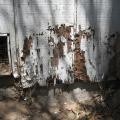How To Prepare Your Trees For Winter Weather
Tree pruning can be a difficult task for some people. Many folks dread when their trees go through winter, which is usually the most difficult for trees to make. One of the best ways to ensure that your tree makes it through this tough time is by readying them for winter weather before any cold weather begins. Winter months are filled with freezing temperatures and ice, making it difficult for trees to make it through the winter.
How To Prepare Your Trees For Winter Weather
We reached out to the Raleigh Tree Company (https://raleightreecompany.com/) and they gave us 8 great tips on prepping your trees for winter. They’re below!
1.Stake your trees
One of the most important steps is to stake your trees. By doing this, you are ensuring that the tree does not fall over. Staking a tree will help to make sure that your tree stays upright and keeps branches and limbs intact. It also helps keep water from running off the tree's trunk. If it rains and runs off of a tree with no stakes, or if there are no stakes, it will cause some damage and can kill the tree by causing rot to set in on the trunk. Adding up on stakes will prevent this from happening.
2. Remove dead and diseased limbs
One of the first things you will have to do is cut off all dead branches. It makes your tree look better and helps prevent disease and pests from setting in. It entails watering your trees, which will cause the insects to crawl up and into the dead branches, where they can set up their nest and reproduce. By getting rid of these branches, you are effectively eliminating these pests before they can do any damage to your trees. Dead branches also make it easier for diseases to grow as well. Dead or dying branches are rotten for the trees, so these branches need to be cut off before the snow comes.
3. Keep your trees clean
One way to keep your trees clean for the winter is to clean up all the leaves. There are even areas where you can go and do this yourself, such as around the base of your tree or in a garden area. By doing this, you are preventing the pests from crawling onto your tree and causing the destruction of the tree's leaves. It is also an excellent way to prevent diseases from spreading as well. You will want to do this when it is still warm outside so that you will not have to be concerned about snow or ice covering up all of the work you put into it.
4. Spray trees with insecticides
Since some insects prefer to nest in dead or dying branches, you will want to spray the outside of your tree with insecticides. Make sure that you do this before the snow comes. You can do this when the air is still warm, and it is not yet snowing. If you do this in the fall, there will be less chance for any ice or snow covering up your work. It will help kill off insects that have already started their life cycle and might already be protecting their nests from predators by covering them up with leaves. It will help prevent the insects from coming out of their nests and eating your tree's leaves.
5. Cut back tree limbs
The first thing that you need to do is cut back any branches that are touching your roof or any other item on your property. By doing this, you can ensure that there is no risk of falling branches, which could hurt someone or cause damage to things on your property. You will want to leave about 1 foot between the tree trunk and any other item near it, such as the house or garage. Thin-barked trees are more prone to breaking branches, so you will want to trim down the components touching your home.
6. Remove any large limbs that could cause damage
When removing limbs bigger than 1 foot in length, you will want to use a chainsaw. It is because not every person has a chainsaw, which is why you want to ensure that you know how to use one if you need to do it yourself. When using one of these tools, you want to cut off any large limbs as close to the tree's trunk as possible. You should always ensure that the cutting chains have seen plenty of hours and have been appropriately maintained before using them.
7. Trim your trees and lawn
Now that you have removed all the dead branches, you will want to trim up your trees and lawn. It is for two main reasons. First, it will make it easier for snow removal companies to go around your house and clear off any snow from the roof. Second, it will ensure that your tree does not cast a shadow on your home during winter. To do this, you want to trim down branches hanging above where you walk or drive on your property. You should also trim back branches that would interfere with any plow from removing any snow from your driveway or street area.
8. Practice Mulching
One of the best ways to protect your trees is by applying mulch to the area around and underneath the trunk. You will want to do this right before it starts snowing, which will slowly go into the ground as it snows. It is also an excellent way to eliminate leaves under and around your tree. Mulch helps to keep moisture in, which helps keep your tree from drying out. It also supports any nutrients that would usually be washed away from the rain if you had not applied any mulch. To retain moisture and nutrients, you will need to try and keep this layer at least an inch to two inches beneath the surrounding soil.
Protecting your trees is very important because they can lose all of their leaves, which is why you want to take the necessary steps to do this. Removing dead wood and diseased limbs can protect your trees from these pests and diseases. It will also make it easier for snow removal companies to remove snow from the trees once it starts snowing. By doing this, you are preventing the damage caused by fallen branches or limbs. You are also preserving the moisture levels around your property and any nutrients in the soil that would have been washed away by the rain if no mulch had been added around each tree.
More to Read:
Previous Posts:








